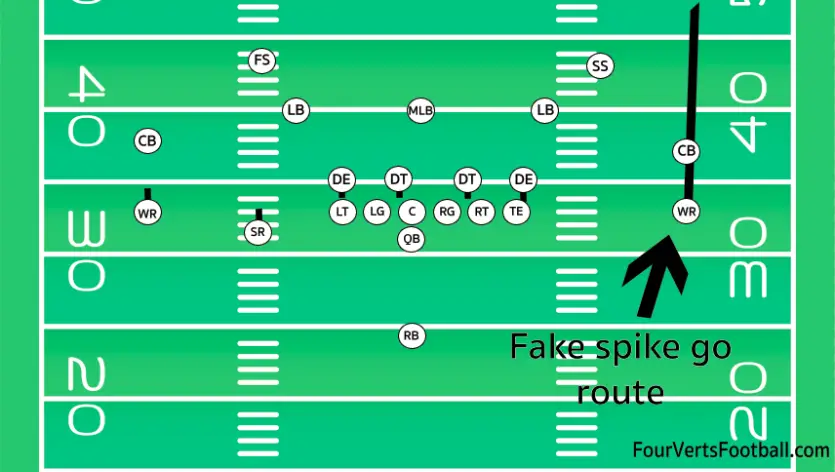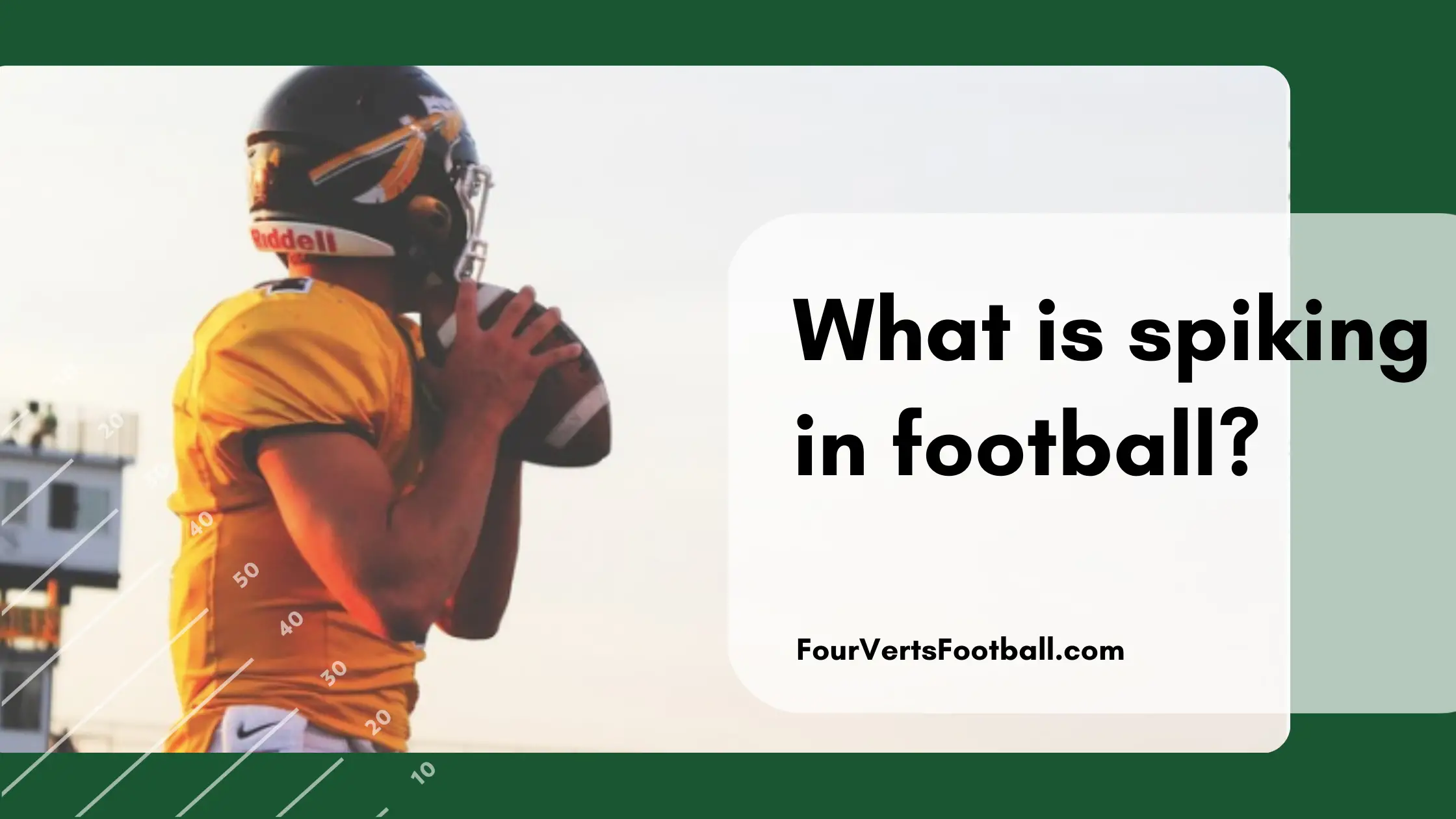A spike play in football occurs when a quarterback intentionally throws an incomplete pass at the start of the play in order to stop the clock.
When spiking a football the quarterback snaps the ball and throws it at the ground immediately using as little time as possible. Spiking the football will cost you a down without gaining any yards.
Quarterbacks typically only spike the football late in a half or near the end of a game when looking to stop the clock. Spiking often occurs when a team has used most or all of its timeouts.
Why do quarterbacks spike the football?
There is one benefit to spiking the football and that is to stop the clock. This is the main reason why spikes are only used in dire situations. The only time that this football play is beneficial is when you value forty more seconds on the clock over another down.
Say you complete a 25-yard pass in the middle of the field with 20 seconds left. The clock will be ticking down as you rush up the ball. A typical play paired with the time to get to the line of scrimmage may take you right to the end of the game.
But if you run up to the line and spike the ball you will have stopped the clock. This will burn a down but you will now have time to organize a play for at least one more shot at the end zone.
Though teams will not only spike the football when they are out of timeouts in the last few seconds. You may also find that spikes may take place with a minute or two left and a timeout in hand.
As you get later into the game time becomes more important and downs less so. If you need a touchdown on your final drive you are going to be using all four downs anyways.
If a team can save a chunk of time by spiking the ball with a minute left they will often go ahead and do that.
Why Spiking The Football Isn’t Intentional Grounding
Spiking the football is not considered intentional grounding due to a rule put into place by the league.
Rule 8, Section 2, Article 1 NFL Rules
The rule is as follows:
Item 3: Stopping Clock. A player under center is permitted to stop the game clock legally to save time if, immediately upon receiving the snap, he begins a continuous throwing motion and throws the ball directly into the ground.
This rule allows quarterbacks to utilize spiking the ball in order for time management purposes. Though it does state the specific way that a spike can be done in order for it to be illegal.
Just because a spike is legal does not mean you can perform one when a defensive end is chasing you out of the pocket.
What Is a Fake Spike in football?

A fake spike occurs when a team acts as though they are about to spike the ball but instead run a play. Since the defense often is not ready for these plays it can allow the offense the element of surprise.
Since the defense believes a spike is coming they are not anticipating an actual play. During a spike, the players will line up normally only to have the quarterback throw the ball at the ground immediately.
When a fake spike occurs the players will line up expecting the play to be dead a second after it starts. This can allow the wide receiver to get the jump on his defender potentially leading to a big play.
At worst the wide receiver is likely going to end up in a one on one matchup against the cornerback.
On most plays at least one safety is going to be waiting deep into the defensive backfield in order to help on long throws. This makes it quite difficult for quarterbacks to complete these long passes to wide receivers.
When a fake spike occurs it is likely that the safeties will have moved up closer to the line of scrimmage. This usually happens because the safeties believe that their opponents are not going to run a play.
This creates a great opportunity for the wide receiver to get open for a deep throw. Even if the cornerback sees this coming the wide receiver will still have a chance to beat them in a one on one matchup.
For this reason, you will notice the wide receiver will almost always go deep when running a route on a fake spike.

